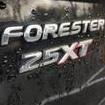welding project Juular's Scandi Noir. Volvo C70, 240 &122. Earth day.
-
Similar Content
-
Homage to my Volvo 240
By DirtyDaily,
- 0 replies
- 365 views
-
Collection day
By MAF260,
- 29 replies
- 921 views
-
A day out
By Bren,
- 11 replies
- 605 views
-
New car day 1 2
By Flat4,
- 58 replies
- 3,033 views
-
- 5 replies
- 468 views
-







Recommended Posts
Create an account or sign in to comment
You need to be a member in order to leave a comment
Create an account
Sign up for a new account in our community. It's easy!
Register a new accountSign in
Already have an account? Sign in here.
Sign In Now